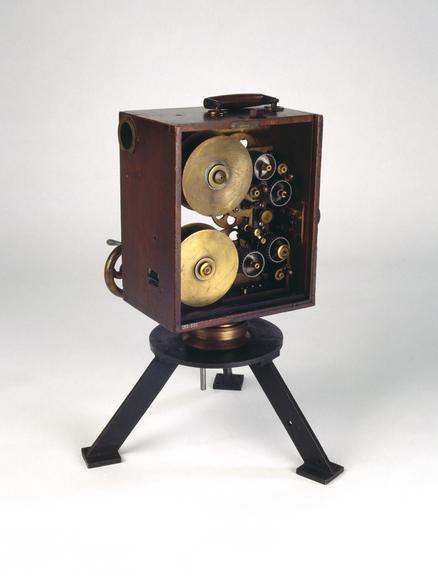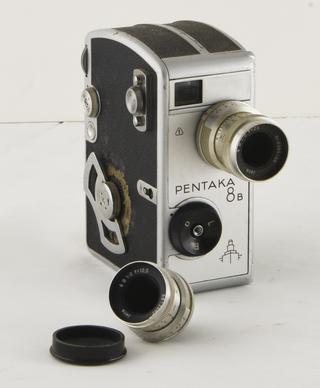Robert Paul's Cinematograph Camera No 2
Early Kinematograph apparatus by Robert Paul, London, 1896. One camera with continuous feed.
More
Robert Paul stood outside St Paul's Cathedral with this camera filming Queen Victoria’s Diamond Jubilee procession in June 1897.
This camera has what is believed to be the first panning mechanism. By turning the handle, the camera rotates smoothly on its stand, capturing a steady side-to -side shot. Although it was probably designed to capture scenes of the Jubilee procession as it marched past, no footage exists that shows the mechanism in action.
- Measurements:
-
overall: 577 mm x 600 mm x 390 mm,
- Materials:
- wood (unidentified) , brass (copper, zinc alloy) , cast iron , steel (metal) , glass and bronze (copper, tin alloy)
- Object Number:
- 1913-550 Pt1
- type:
- cine camera and cinematograph
- Image ©
- The Board of Trustees of the Science Museum




















